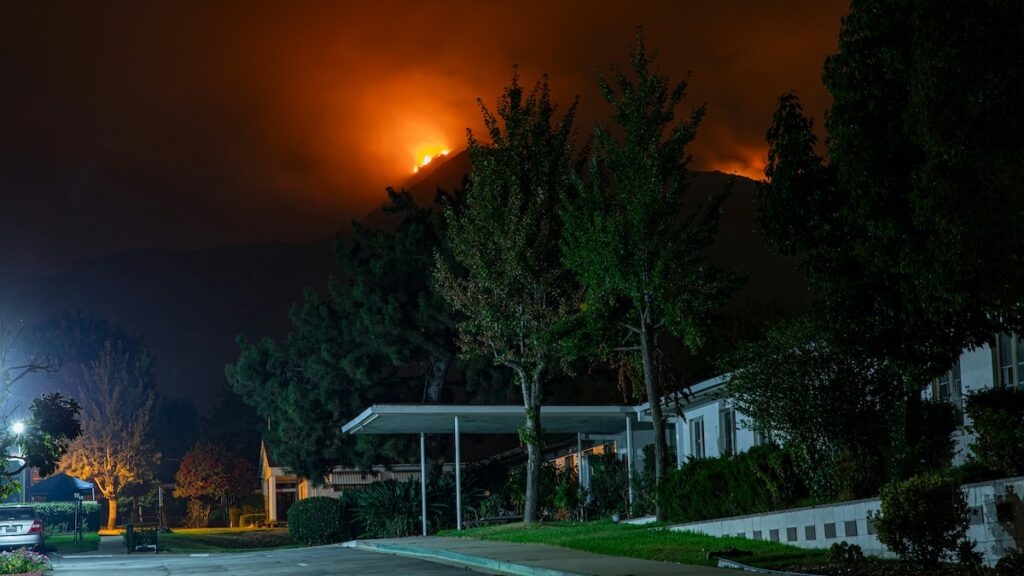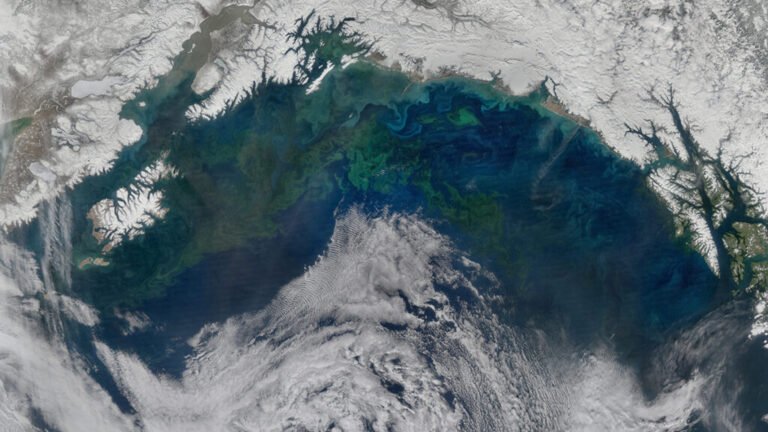

Climate change warps the timing of natural processes. Scientists have evidence that flowers are blooming, trees are dropping their leaves, and animals are emerging from hibernation earlier than they did years prior.
“We’re seeing a trend towards an earlier onset.”
Now, there’s new evidence of another climate-related shift: California’s wildfire seasons are beginning as much as 46 days earlier than the typical onset 3 decades ago. The analysis, published in a paper in Science Advances, found that the trend was similar in almost all of California’s varied ecosystems.
The study defined wildfire season onset as the day when 5% of that season’s fires have occurred. “We’re seeing a trend towards an earlier onset,” said Gavin D. Madakumbura, a hydroclimatologist at the University of California, Los Angeles and lead author of the new study. “We wanted to understand what’s causing this.”
Previous work, including one landmark 2006 study, indicated that in some western U.S. forests, the wildfire season has both lengthened and started earlier.
To quantify the role of climate change in those trends, Madakumbura and his colleagues first analyzed U.S. Forest Service fire occurrence data and season start dates from 1992 to 2020 in California’s 13 ecoregions, from mountains in the north to deserts in the south. They found that since 1992, fire season has started earlier in all but one ecoregion (the Sonoran Basin and Range). The Cascades ecoregion shifted the most, with its 2020 onset occurring 46 days earlier than in 1992.
“The fact that they can see [the shift] across a broad array of ecosystems, most of them statistically significant, is noteworthy,” said LeRoy Westerling, a climate scientist at the University of California, Merced who was the lead author of the 2006 study that first indicated the shift. Westerling was not involved in the new study.
Though the shift in onset timing has been suspected for years, its magnitude is “much larger” than anticipated and “truly surprising,” wrote Virginia Iglesias, a climate scientist at the University of Colorado Boulder who was not involved in the new study, in an email.
Northern California ecoregions showed stronger trends than southern ecoregions, with the Eastern Cascades, Cascades, Central California Foothills, and Coastal Mountains showing the most significant changes. Madakumbura said the north-south difference exists because northern ecoregions’ fire seasons are more sensitive to changes in winter snowpack, which has also dwindled as the climate warms.
Climate Change’s Role
The team then evaluated the role of climate change as a driver of each ecoregion’s fire season start dates.
For each ecoregion, they determined how strongly climate-related drivers, such as how dry fuels were, influenced fire season start date compared with drivers that were not directly related to climate change, such as vegetation type. Then they compared changes observed for each of those drivers through time.
“The calendar-based boundaries we’ve long relied on for fire preparedness may no longer hold.”
The result suggested that although natural variability and severe droughts in the mid-2010s contributed to earlier fire seasons, climate change was a major driver of the earlier season in 11 of the 13 ecoregions.
“The climate, and the aridity of fuel, is the main controlling factor,” Madakumbura said.
“The paper presents compelling evidence that anthropogenic climate change is a dominant and quantifiable driver of the earlier wildfire season onset,” Iglesias wrote. “The logic is clear and the conclusions are well supported.”
As the climate continues to warm, fire seasons in California will likely start even earlier, the authors wrote. Knowing that fire seasons are trending earlier can help emergency managers prepare for longer fire seasons that burn more area, Madakumbura said.
“An earlier start to the season just taxes all these resources that much earlier,” Westerling said. “It’s the same people, the same equipment, and the same budgets that are under stress.” Fire season in California is extending later into the fall as well, he said, creating a much longer period when communities need to stay prepared for fires.
The asymmetry between northern and southern trends “highlights the need for regionally tailored fire management and climate adaptation strategies,” Iglesias wrote.
“The calendar-based boundaries we’ve long relied on for fire preparedness may no longer hold.”
—Grace van Deelen (@gvd.bsky.social), Staff Writer
Citation: van Deelen, G. (2025), California’s getting an earlier start to wildfire season, Eos, 106, https://doi.org/10.1029/2025EO250297. Published on 6 August 2025.
Text © 2025. AGU. CC BY-NC-ND 3.0
Except where otherwise noted, images are subject to copyright. Any reuse without express permission from the copyright owner is prohibited.


